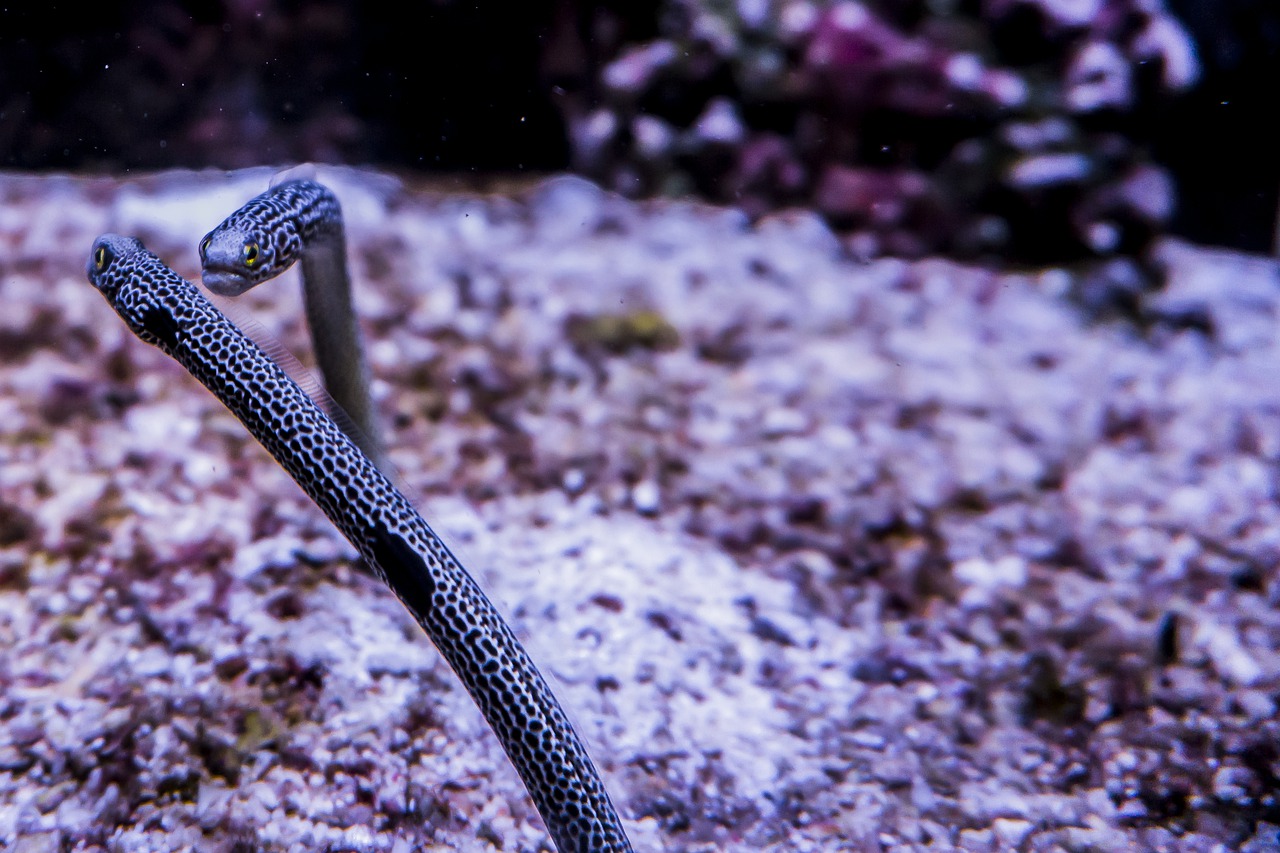A Deep Dive into garden Eels: Masters of the Sandy Depths
Garden eels, with their slender bodies and mesmerizing swaying movements, are a captivating sight in the marine world. These unique creatures, belonging to the family Congridae, are not true eels but rather a distinct group of marine fish. They are primarily found in tropical and subtropical waters worldwide, inhabiting sandy or muddy bottoms where they create intricate burrows.
This article will delve into the fascinating world of garden eels, exploring their habitat, behavior, and the unique challenges of keeping them in captivity.

Garden eels are predominantly found in saltwater environments. They are highly adaptable and can be encountered in a variety of marine habitats, including:
Coral reefs: Often found near the base of reefs, where they utilize the surrounding structure for protection.
Their distribution is widespread, spanning tropical and subtropical regions across the globe. They are commonly observed in the Indo-Pacific, Caribbean Sea, and the Red Sea.

Garden eels exhibit a distinctive appearance:
Elongated body: Their bodies are slender and snake-like, typically ranging from a few inches to over a foot in length.
Garden eels are primarily benthic organisms, meaning they spend most of their lives on or near the bottom of the seafloor. Their behavior revolves around their unique burrowing lifestyle:

Burrow construction: They create U-shaped burrows in the sand or mud using their strong tails. These burrows provide shelter, protection from predators, and a stable anchor for their bodies.
Garden eels face a variety of threats in their natural environment:
Predation: They are preyed upon by various marine animals, including fish, crustaceans, and cephalopods.
Keeping garden eels in an aquarium can be a rewarding experience, but it requires careful consideration and a dedicated setup:
Tank Requirements
Aquarium size: A minimum tank size of 50 gallons is recommended for a small group of garden eels. Larger aquariums are preferable to allow for ample space for burrowing and swimming.
Feeding
Diet: Garden eels are primarily filter feeders. They can be fed a variety of live and frozen foods, including plankton, copepods, and mysis shrimp.
Compatibility
Reef-safe: Garden eels are generally considered reef-safe and can be kept with a variety of other peaceful marine invertebrates.
Challenges
Burrow stability: Maintaining a stable sand bed can be challenging, as the eels’ burrowing activity can disturb the substrate.
While many species of garden eels are relatively common, some populations may be facing localized threats due to habitat loss and overfishing. Conservation efforts are crucial to ensure the long-term survival of these fascinating creatures.
Garden eels are a captivating addition to any saltwater aquarium. Their unique behavior, mesmerizing appearance, and relatively peaceful nature make them a popular choice among aquarists. However, keeping them successfully requires careful planning, a well-maintained aquarium, and a thorough understanding of their specific needs. By providing them with a suitable environment and attentive care, aquarists can enjoy the beauty and wonder of these remarkable creatures for years to come.

